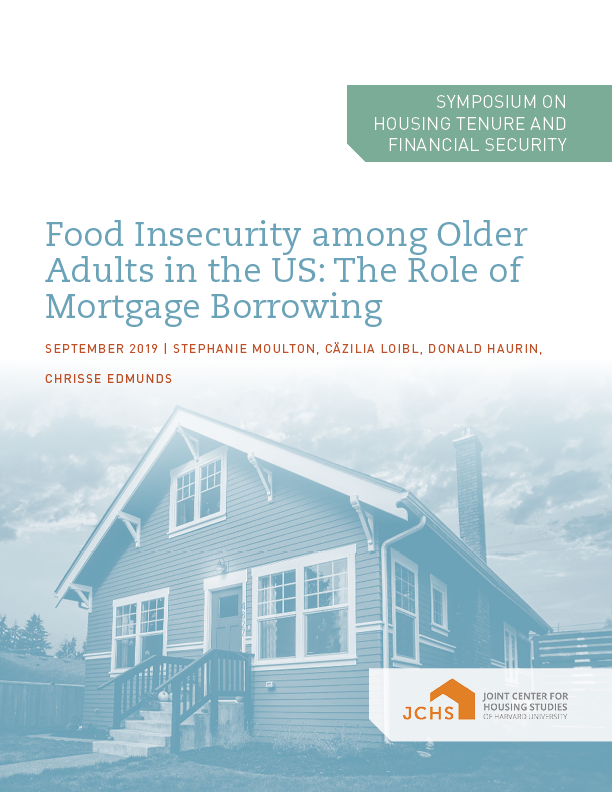Food Insecurity among Older Adults in the US: The Role of Mortgage Borrowing
As of 2016, close to 10 million older adults faced the threat of hunger in the US, constituting an urgent food policy issue. For older adults, heterogeneity in household wealth is even more important than income in predicting whether or not a household is food insecure. Yet not all wealth is equally accessible for households experiencing food hardship. Housing wealth—an illiquid asset—is the primary source of wealth for many older adults, particularly those with lower incomes. We use data for homeowners aged 62 and older from the Health and Retirement Study to identify the mechanism that links housing wealth to food insecurity. The results document the critical role of home equity as a “protective buffer” and point to the importance of access to mortgage borrowing to reduce material hardship late in life.
This paper was originally presented at a national Symposium on Housing Tenure and Financial Security, hosted by the Harvard Joint Center for Housing Studies and Fannie Mae in March 2019. A decade after the start of the foreclosure crisis, the symposium examined the state of homeownership in America, focusing on the evolving relationship between tenure choice, financial security, and residential stability.

